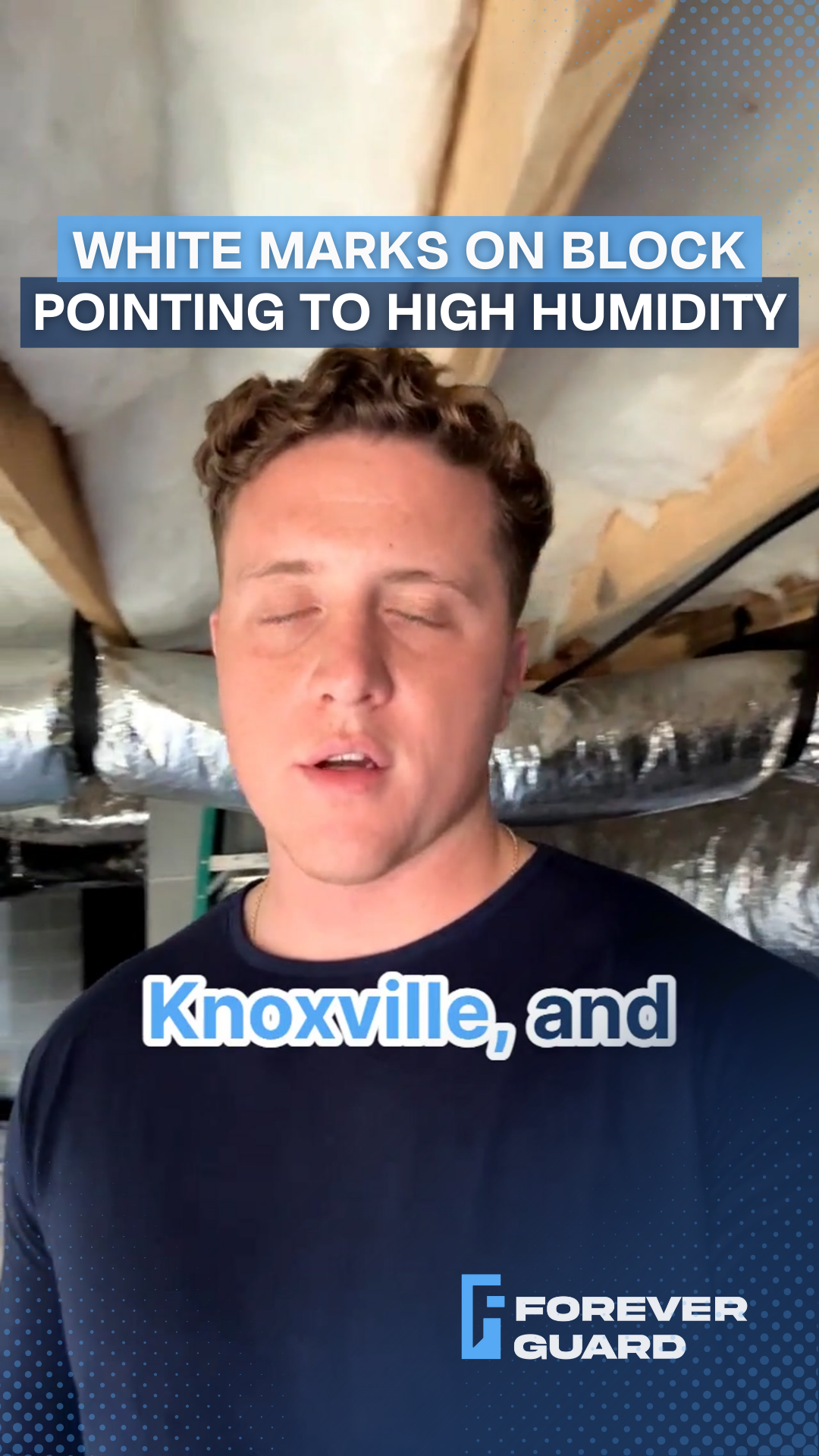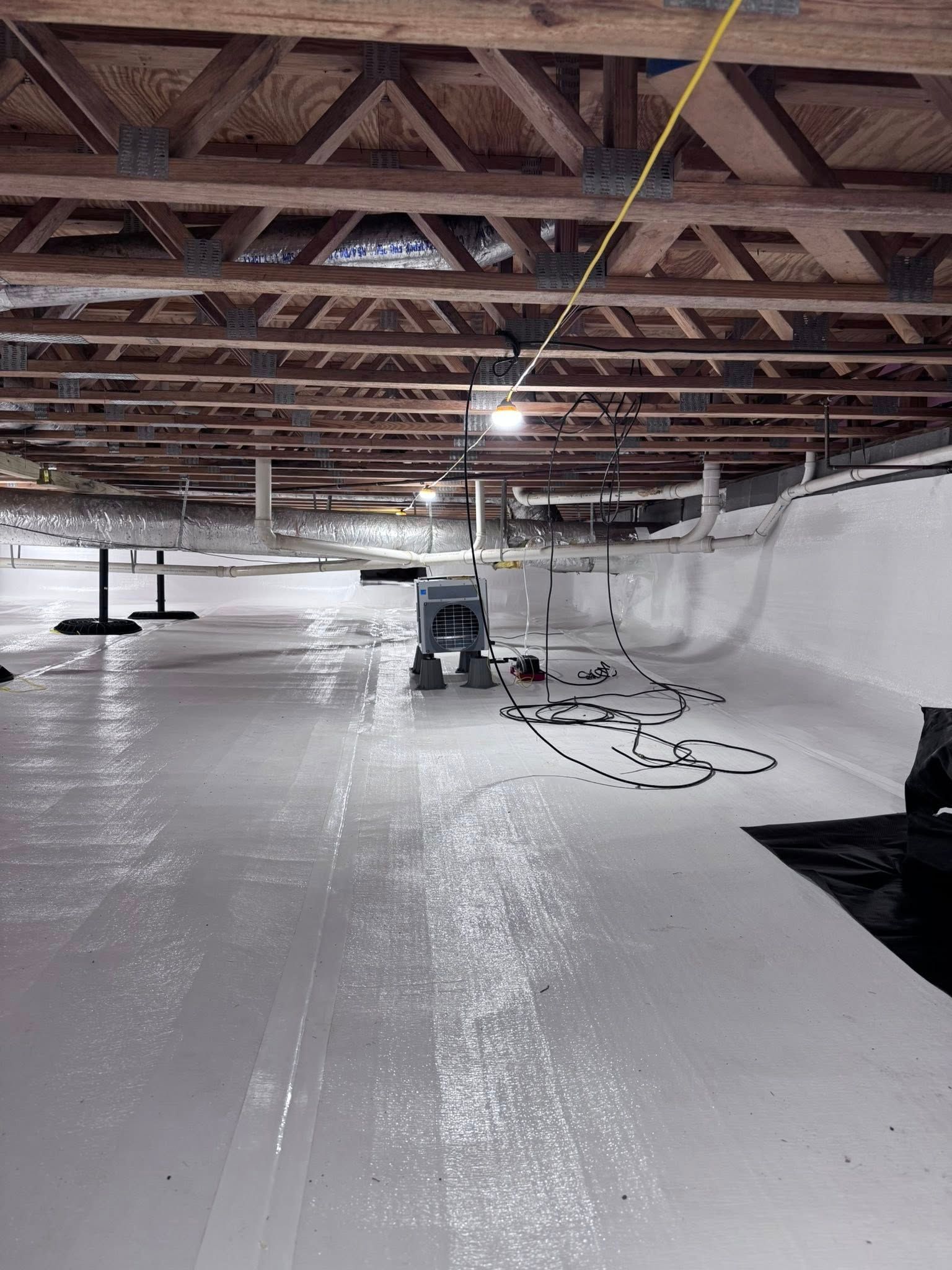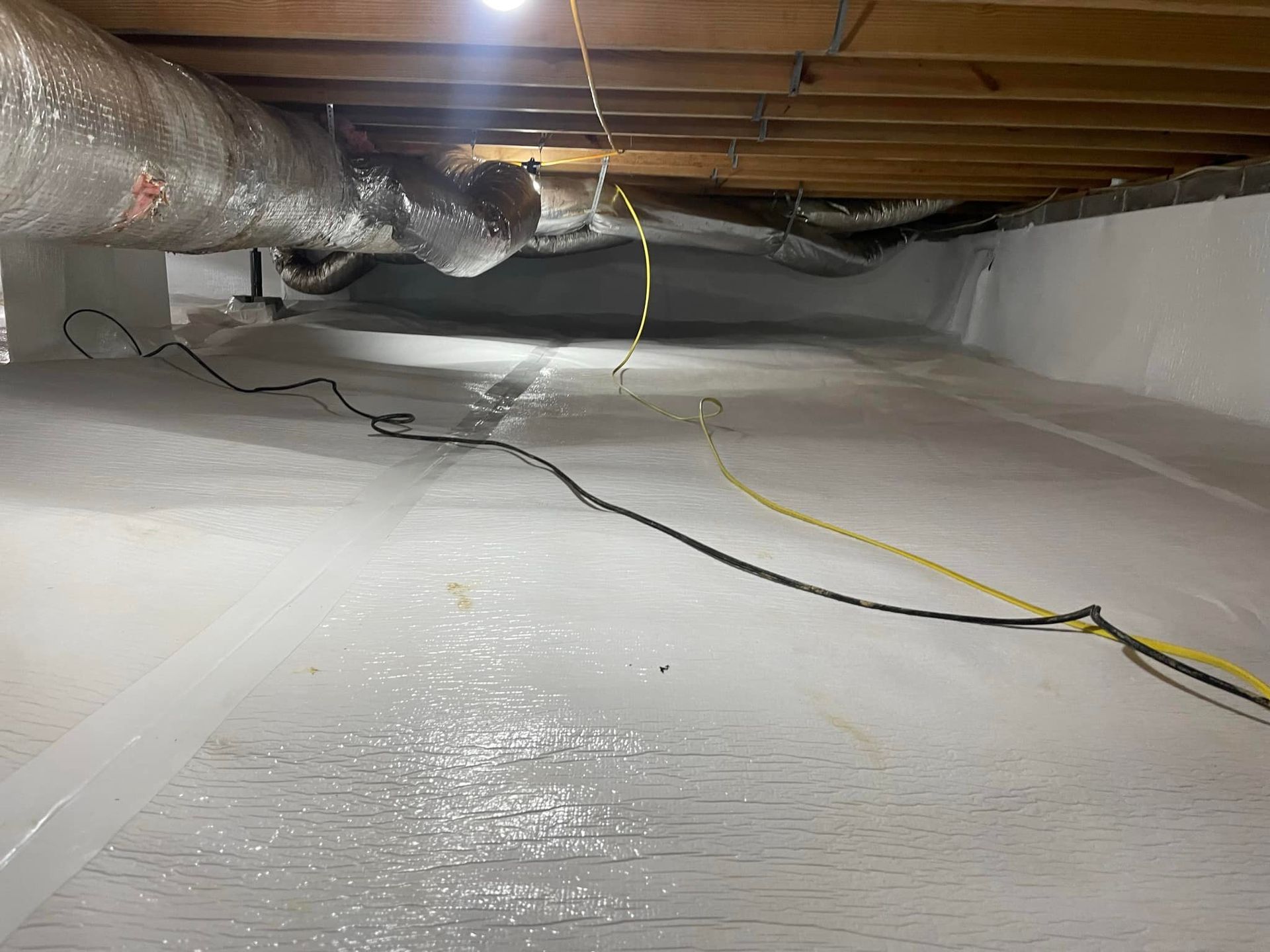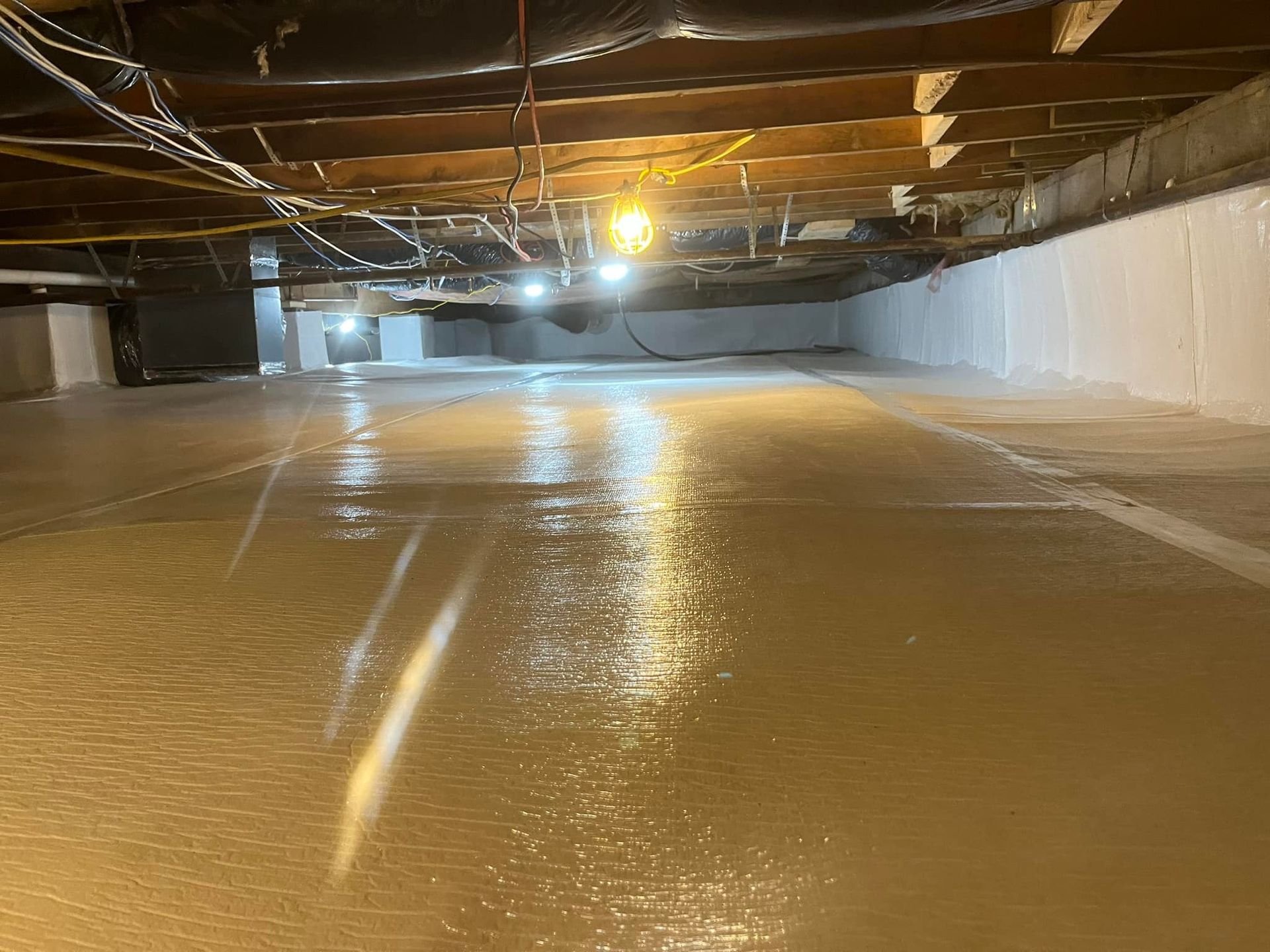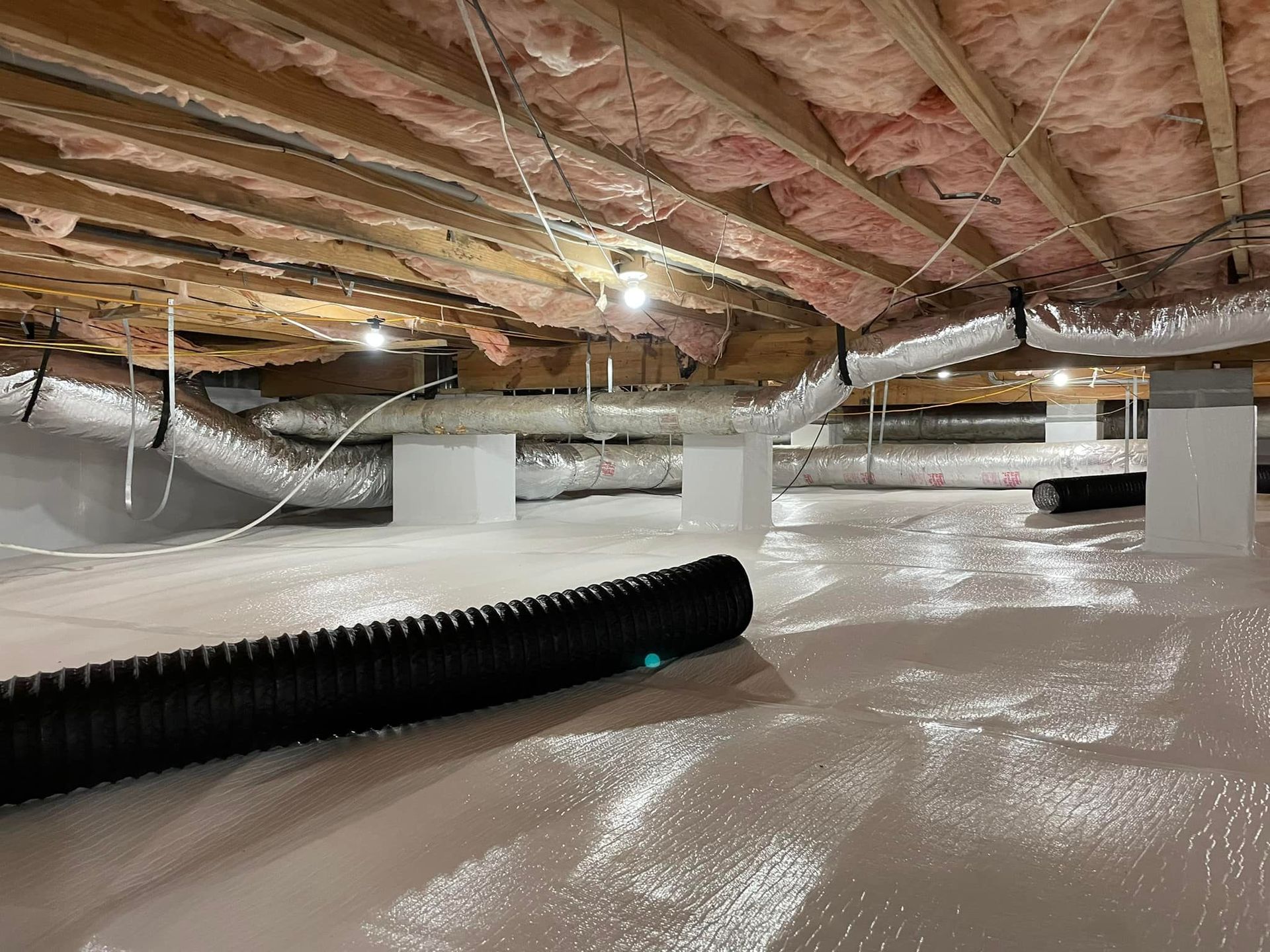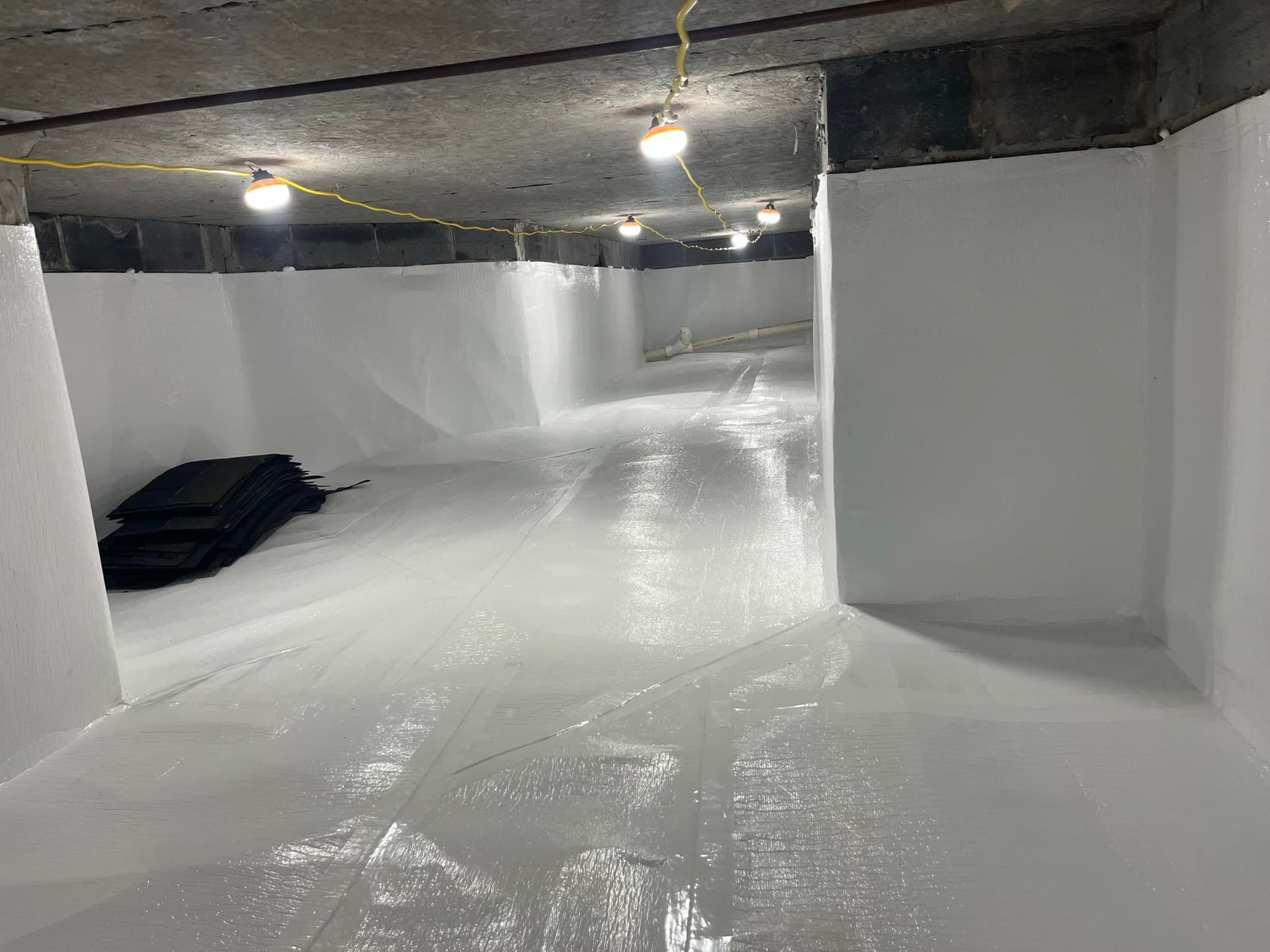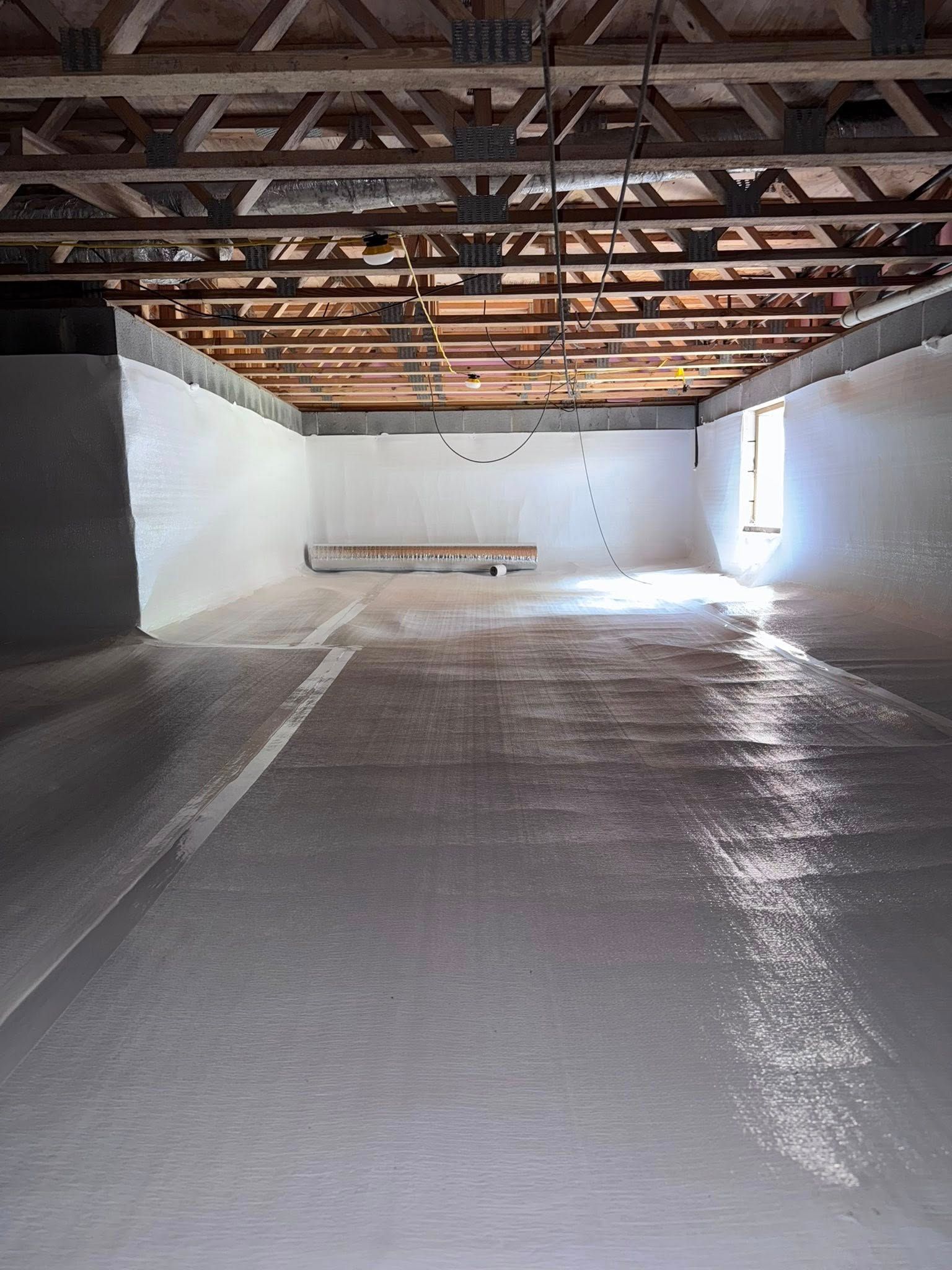Century-Old Crawl Space Rescue: How We Solved 100 Years of Water Damage
When Historic Meets Modern: Bringing New Life to Aged Foundations
A real-world look at transforming a 100-year-old crawl space from water-logged to water-tight
When we got called to this historic home, another company had already attempted an encapsulation.
But like many quick-fix solutions in century-old homes, it wasn't addressing the real problem.
Under their vapor barrier, water was pooling everywhere - trapped between the barrier and the soil, creating exactly the kind of environment we work to prevent.
This is what happens when modern solutions aren't properly adapted for historic homes.
What works in new construction needs special consideration in a house that's seen over a hundred years of settling, shifting, and water migration patterns.
A Century of Hidden Water Damage
The water damage we found told a story of decades of moisture problems. The previous company had installed a vapor barrier, but without proper drainage, they'd essentially created a water bed under the house. Every time it rained or groundwater rose, more moisture got trapped underneath.
Here's what we discovered:
- Standing water pooled beneath the existing vapor barrier
- Rough spots and damage in structural wood members
- Areas so tight you had to belly-crawl to reach them
- A dehumidifier that couldn't properly circulate air through the space
These weren't just cosmetic issues. In a home this old, trapped moisture can compromise structural integrity that's already faced a century of stress. The longer these problems go unchecked, the more expensive they become to fix.
Modern Solutions for Historic Spaces
Fixing a century-old crawl space isn't just about applying modern solutions - it's about adapting them to work with historic construction. Here's how we transformed this space:
First, we stripped out the old vapor barrier completely. No shortcuts, no covering up old problems. Then we tackled the standing water, pumping it out to give us a clean slate to work with.
The real key was installing a proper drainage system. We laid down drainage matting to create channels for water flow, then routed everything to a sump pump. Now, instead of water pooling under the barrier, it gets collected and pumped away from the foundation.
Tight Spaces, Tough Decisions
The biggest challenge? A section of the crawl space so narrow we had to work on our bellies. But that's exactly where water was causing the most damage - and we weren't about to leave it untouched.
We pulled everything out of that tight space, replaced all the damaged materials, and installed new ducting to help the dehumidifier reach these problem areas. The previous setup had the dehumidifier sitting in the basement, unable to properly circulate air through these crucial spaces.
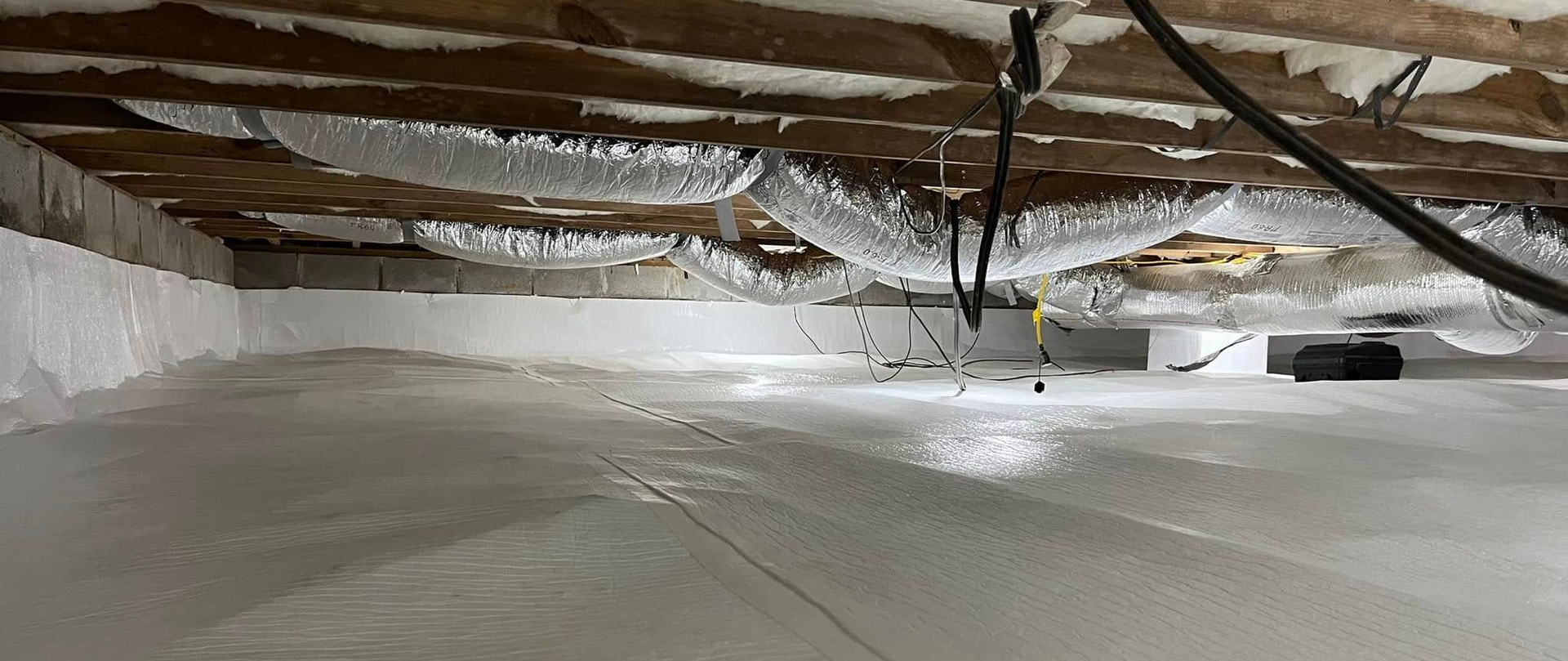
Building for the Next Century
Today, this crawl space is ready for its next hundred years. The new 20-mil vapor barrier provides superior protection. Strategic ductwork ensures even the tightest spaces get proper air circulation. And the drainage system actively prevents water accumulation.
We treated the subfloor and eliminated fungal growth, addressing not just the symptoms but the root causes. While some rough spots in the wood remind us of past damage, the space is now clean, dry, and properly protected.
Protect Your Historic Home
If you own a historic home, don't wait for water damage to become visible upstairs. By then, you're already looking at expensive repairs. Here are key warning signs to watch for:
- Musty smells coming from below your floors
- Uneven or soft spots in flooring
- Persistent dampness after rain
- Rising humidity levels in your home
- Signs of wood damage or discoloration
Remember, older homes need special attention. What worked fine for decades might not meet today's standards for moisture control and foundation protection. And a quick fix that might work in a newer home could actually trap problems in a historic structure.
Get Professional Help
Historic homes deserve contractors who understand their unique challenges. At ForeverGuard, we specialize in adapting modern waterproofing solutions to older homes, preserving their character while protecting their future.
Don't let water damage compromise your historic home's foundation. Schedule an inspection today, and we'll help make sure your home stays strong for generations to come.
